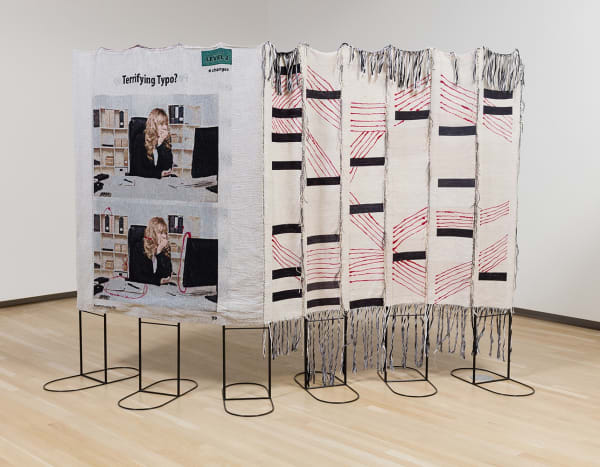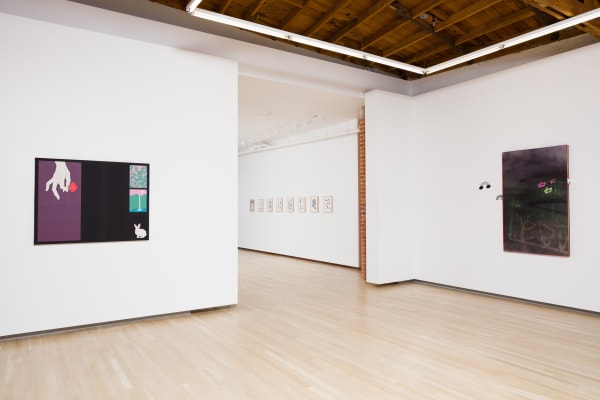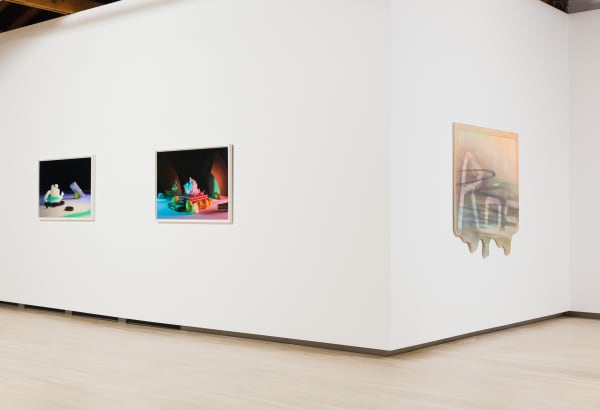Broken Language
Shulamit Nazarian is pleased to present Broken Language, an exhibition featuring four artists whose works operate within coded systems of visual communication. These artists utilize fractured letterforms, emojis, trademarks, commercial illustrations, and icons in a process that dismisses linear narrative in favor of non-hierarchical structures of language. Collectively, the work builds on millennia of visual storytelling—from hieroglyphs to narrative paintings to corporate logos— transcending cultural boundaries and linguistic constraints.
The paintings and sculptures of New York-based Wendy White reference iconic branding against a spectrum of color. White’s work evokes an acute sense of nostalgia; luminous hues conjure bright, sun-drenched surf and skate culture and become a backdrop for longing and melancholy. Airbrushing recalls the immediacy of spray-painted abandoned pools and storefronts in Southern California as well as the alleyways adjacent to the artist's Brooklyn-based studio––recording a clash of youth culture and consumerism. White’s frenetic scripts, confident in their saturation and gesture, live alongside a smattering of commercial logos, both of which hover over ghostly color fields.
An early adopter of computer-generated imaging (CGI), Los Angeles-based Takeshi Murata constructs hand-drawn animations, highly fabricated wall reliefs, digital still-lifes, and video installations to accentuate the defects and broken codes of film, advertising, and pop culture. Often drawing on the language of early emoticons and emojis, Murata’s slick allegorical works embrace and exploit the psychology of shared cultural references embedded in objects, images, and symbols.
The practice of San Francisco-based Josh Faught utilizes textiles, collage, sculpture, and archival materials to explore the construction of queer identity. Fragments of text pulled from greeting cards, novelty buttons, and other sentimental ornamentation investigate relationships between desire, domestic dysfunction, and sexual difference. Faught’s works revel in the anxiety typified by suburban self-help culture and decorative compulsion—vestiges of which are woven throughout the material structures of his hand-made textiles and staged as docudramatic tragedy.
Los Angeles-based Greg Ito presents pared down, graphic vignettes that cultivate a sensation of tension through composition and color. With three or four small scenes rendered within a single canvas, Ito’s storyboards ominously collapse the past, present, and future. The result is a distorted narrative unhinged from the natural sequence of time. Taking cues from illustrated children’s books and aircraft safety cards, Ito’s paintings address pictorial spaces designed to overcome normal language barriers, while provoking more uncertainty than they resolve.
Operating in an age where emoji is the fastest growing language in the world, the artists in Broken Language seamlessly shift between networks of communication to convey both personal and collective expression. Moving beyond common systems of verbal and written language, these artists engage with new and evolving methods of sharing information facilitated by globalization in the digital era.















